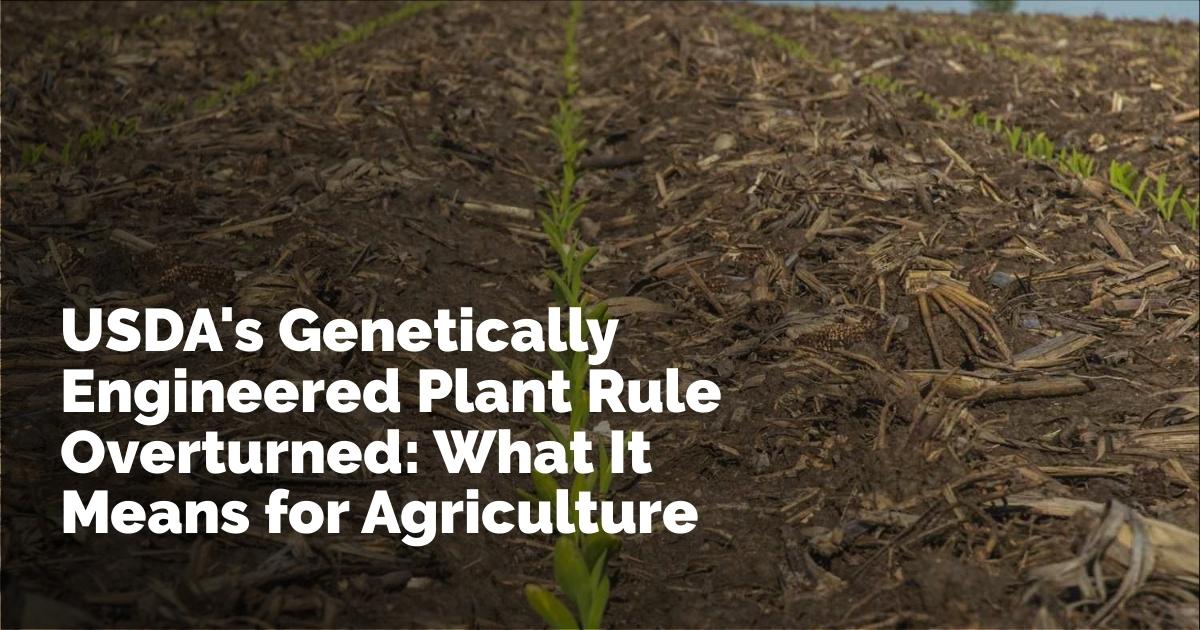Introduction to the SECURE Rule Controversy
The agricultural sector witnessed a significant legal decision when U.S. District Judge James Donato overturned a rule that had exempted genetically engineered plants from mandatory pre-market reviews. This regulation, known as the SECURE rule, was initially promulgated during the Trump administration in 2020, aiming to modernize the U.S. Department of Agriculture (USDA)'s approach to plant regulation. Opponents of the rule argued that it posed significant risks to environmental safety and overlooked critical scientific oversight, leading to its reconsideration.
Background of the SECURE Rule
Initially introduced by the Agriculture Secretary Sonny Perdue, the SECURE rule was a component of a broader initiative to streamline plant innovation processes. Its primary objective was to facilitate innovation by alleviating the regulatory burden on genetically engineered plants that were deemed unlikely to present environmental harms. Under the previous regulations, all genetically engineered and gene-edited plants were required to undergo USDA approval before commercialization to prevent the introduction of plant pests.
Legal Challenges and the Court's Decision
The rule faced substantial opposition from various environmental and safety advocates. In his 26-page ruling, Judge Donato sided with the plaintiffs, determining that the USDA had acted "arbitrarily and capriciously" in its regulation. Consequently, he vacated the rule and remanded it to the Animal and Plant Health Inspection Service (APHIS) for further consideration, ensuring the regulation aligns with the court's directives.
Implications for Farmers and Environmental Oversight
George Kimbrell, legal director for the Center for Food Safety, one of the plaintiffs in the case, hailed the ruling as a significant win for farmers, the environment, and scientific scrutiny. Criticism emerged that the USDA was attempting to transfer its regulatory responsibilities to influential agricultural firms like Monsanto and the broader pesticide industry. This decision underscores the necessity for stringent scientific evaluation in biotechnology regulation, advocating for cautious advancement over hasty deregulation.
The Executive Directive and its Impact
The SECURE rule was implemented following an executive order from President Trump, directing the USDA, along with the Food and Drug Administration (FDA) and Environmental Protection Agency (EPA), to update their regulatory frameworks for biotechnology. The order emphasized minimizing unnecessary regulation for low-risk agricultural biotechnology products. At the time, the emergence of gene editing was heralded as a promising advancement, offering a faster, safer method to achieve attributes previously attainable through traditional breeding.
The Future of Biotechnology Regulation
This ruling raises critical questions about the future of biotechnology regulation in agriculture. As gene editing becomes an increasingly popular tool for developing new plant varieties, the balance between fostering innovation and ensuring environmental protection remains a delicate challenge. Stakeholders in the biotechnology field must now navigate a regulatory landscape shaped by heightened scrutiny and evolving judicial interpretations.
Conclusion: Striking a Balance
The Judge's decision to overturn the SECURE rule highlights the ongoing debate about the appropriate level of regulatory oversight for genetically engineered plants. This legal battle emphasizes the importance of sustainable innovation that acknowledges both the potential benefits of biotechnological advances and the necessity of protecting our environmental integrity. As the USDA reconsiders its approach, it must strive to reconcile these competing priorities to establish a framework that supports responsible agricultural development.
출처 : Original Source

